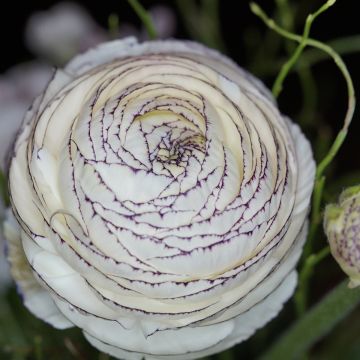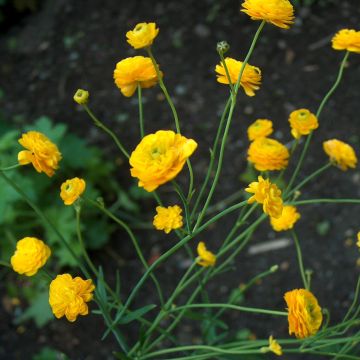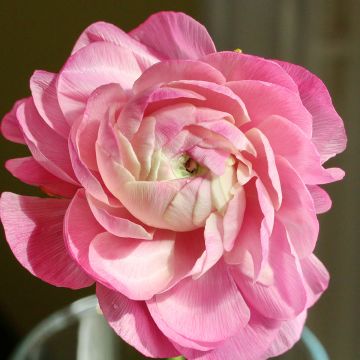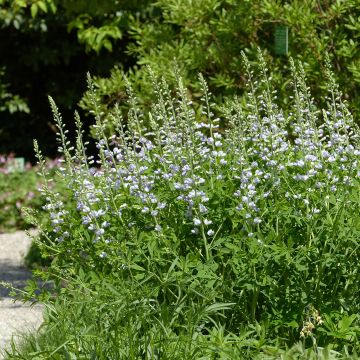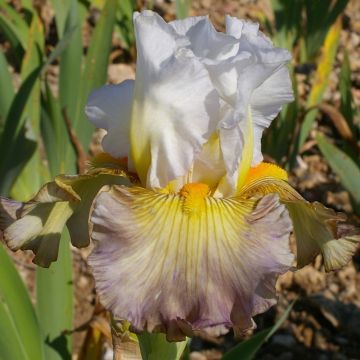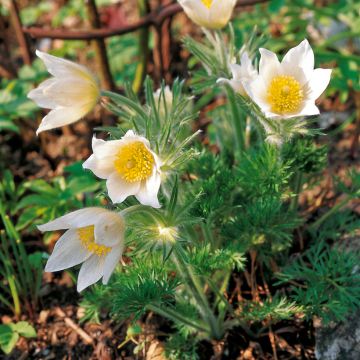

Ranunculus lingua - Grande douve


Ranunculus lingua - Grande douve


Ranunculus lingua - Grande douve
Ranunculus lingua - Greater Spearwort
Ranunculus lingua
Greater Spearwort
This item cannot be shipped to the selected country
Delivery charge from €5.90
More information
Schedule delivery date,
and select date in basket
This plant carries a 12 months recovery warranty
More information
We guarantee the quality of our plants for a full growing cycle, and will replace at our expense any plant that fails to recover under normal climatic and planting conditions.
From €5.90 for pickup delivery and €6.90 for home delivery
Express home delivery from €8.90.
Does this plant fit my garden?
Set up your Plantfit profile →
Description
The Ranunculus lingua is a plant from our aquatic flora better known as the Great water buttercup, or the tongue-leaved buttercup. This vigorous perennial with long pointed leaves bears very bright yellow flowers resembling large buttercups, throughout the summer. Although prolific and able to colonize waterlogged soils, this beautiful species is now protected throughout France. Decorative, it will accompany other semi-aquatic perennials around large basins.
The Ranunculus lingua, from the family of buttercups, is a herbaceous perennial plant with a spreading rhizomatous rootstock, capable of spreading in width significantly. It is native to mainly central Europe, central Asia, and India. In France, it is found in very humid places such as marshes, ponds, or water-filled ditches permanently. Its above-ground vegetation emerges from the ground in spring and disappears in winter. The great water buttercup produces a loose clump of strong, hollow, brittle, leafy and erect stems, reaching an average of 1 m (3ft) from the ground. It produces two types of leaves: those of the stems are very long, lanceolate, tapering to a point, with entire or dentate margins, semi-sheathing, while those that develop underwater are oval and heart-shaped. Their colour is a light and vibrant green. Flowering begins in June and continues until August. At the tip of the stems, solitary flowers with 5 petals of a very bright golden yellow colour bloom, arranged in a cup 3 to 5 cm (1 to 2in) in diameter around a small yellow stamen center.
Plant this Great water buttercup on the edge of a pond or a permanent pond, under 5 to 15 cm (2 to 6in) of water, or in soil that will remain waterlogged permanently. Technically, your pond will maintain its balance (i.e. clear water) by combining the following trio: floating plants (Water lilies), submerged plants with strong oxygenating power (Water crowfoot, Pondweed, and Water lettuce), and very shallow water plants on the edge (Japanese iris, Fern, and Horsetail).
Feel free to green the banks with more sophisticated and graphic plants to create an enchanting tableau, such as the Virginia sweetspire Little Henry (a small fragrant white bush) and the Variegated sweet flag (Acorus grass).
Report an error about the product description
Ranunculus lingua - Greater Spearwort in pictures


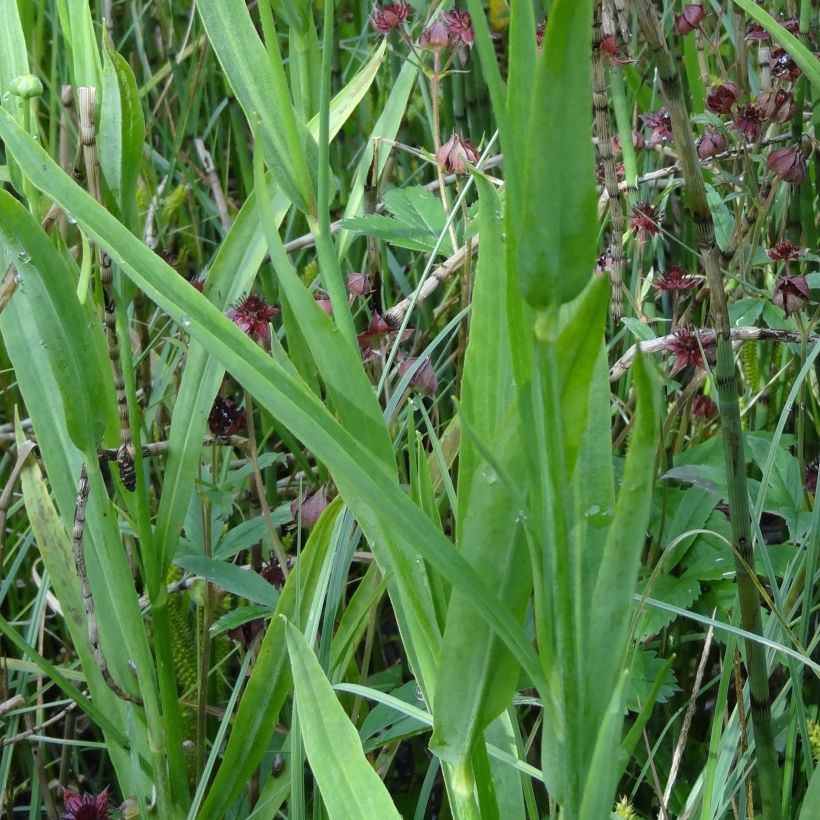



Flowering
Foliage
Plant habit
Botanical data
Ranunculus
lingua
Ranunculaceae
Greater Spearwort
Central Europe
Other Ranunculus - Buttercup
Planting and care
We advise you to cultivate the great water buttercup in a rich soil, with its stump submerged under 5 to 15 cm (2 to 6in) of water or, at the very least, in consistently damp or even waterlogged soil. Like most aquatic plants, you can plant it in an aquatic basket, which allows for better control of its growth. In each basket, fill with aquatic soil that you generously moisten with a watering can. Dig a hole in the center of the pot and place the young plant, taking care to unfold the roots to ensure their proper development. Finally, position the basket in the pond at the recommended height for the plant, which is about ten centimeters below the surface of the water for the great water buttercup. Avoid planting more delicate plants in its vicinity, as it may quickly dominate them.
Planting period
Intended location
Care
This item has not been reviewed yet - be the first to leave a review about it.
Spring flowering perennials
Haven't found what you were looking for?
Hardiness is the lowest winter temperature a plant can endure without suffering serious damage or even dying. However, hardiness is affected by location (a sheltered area, such as a patio), protection (winter cover) and soil type (hardiness is improved by well-drained soil).

Photo Sharing Terms & Conditions
In order to encourage gardeners to interact and share their experiences, Promesse de fleurs offers various media enabling content to be uploaded onto its Site - in particular via the ‘Photo sharing’ module.
The User agrees to refrain from:
- Posting any content that is illegal, prejudicial, insulting, racist, inciteful to hatred, revisionist, contrary to public decency, that infringes on privacy or on the privacy rights of third parties, in particular the publicity rights of persons and goods, intellectual property rights, or the right to privacy.
- Submitting content on behalf of a third party;
- Impersonate the identity of a third party and/or publish any personal information about a third party;
In general, the User undertakes to refrain from any unethical behaviour.
All Content (in particular text, comments, files, images, photos, videos, creative works, etc.), which may be subject to property or intellectual property rights, image or other private rights, shall remain the property of the User, subject to the limited rights granted by the terms of the licence granted by Promesse de fleurs as stated below. Users are at liberty to publish or not to publish such Content on the Site, notably via the ‘Photo Sharing’ facility, and accept that this Content shall be made public and freely accessible, notably on the Internet.
Users further acknowledge, undertake to have ,and guarantee that they hold all necessary rights and permissions to publish such material on the Site, in particular with regard to the legislation in force pertaining to any privacy, property, intellectual property, image, or contractual rights, or rights of any other nature. By publishing such Content on the Site, Users acknowledge accepting full liability as publishers of the Content within the meaning of the law, and grant Promesse de fleurs, free of charge, an inclusive, worldwide licence for the said Content for the entire duration of its publication, including all reproduction, representation, up/downloading, displaying, performing, transmission, and storage rights.
Users also grant permission for their name to be linked to the Content and accept that this link may not always be made available.
By engaging in posting material, Users consent to their Content becoming automatically accessible on the Internet, in particular on other sites and/or blogs and/or web pages of the Promesse de fleurs site, including in particular social pages and the Promesse de fleurs catalogue.
Users may secure the removal of entrusted content free of charge by issuing a simple request via our contact form.
The flowering period indicated on our website applies to countries and regions located in USDA zone 8 (France, the United Kingdom, Ireland, the Netherlands, etc.)
It will vary according to where you live:
- In zones 9 to 10 (Italy, Spain, Greece, etc.), flowering will occur about 2 to 4 weeks earlier.
- In zones 6 to 7 (Germany, Poland, Slovenia, and lower mountainous regions), flowering will be delayed by 2 to 3 weeks.
- In zone 5 (Central Europe, Scandinavia), blooming will be delayed by 3 to 5 weeks.
In temperate climates, pruning of spring-flowering shrubs (forsythia, spireas, etc.) should be done just after flowering.
Pruning of summer-flowering shrubs (Indian Lilac, Perovskia, etc.) can be done in winter or spring.
In cold regions as well as with frost-sensitive plants, avoid pruning too early when severe frosts may still occur.
The planting period indicated on our website applies to countries and regions located in USDA zone 8 (France, United Kingdom, Ireland, Netherlands).
It will vary according to where you live:
- In Mediterranean zones (Marseille, Madrid, Milan, etc.), autumn and winter are the best planting periods.
- In continental zones (Strasbourg, Munich, Vienna, etc.), delay planting by 2 to 3 weeks in spring and bring it forward by 2 to 4 weeks in autumn.
- In mountainous regions (the Alps, Pyrenees, Carpathians, etc.), it is best to plant in late spring (May-June) or late summer (August-September).
The harvesting period indicated on our website applies to countries and regions in USDA zone 8 (France, England, Ireland, the Netherlands).
In colder areas (Scandinavia, Poland, Austria...) fruit and vegetable harvests are likely to be delayed by 3-4 weeks.
In warmer areas (Italy, Spain, Greece, etc.), harvesting will probably take place earlier, depending on weather conditions.
The sowing periods indicated on our website apply to countries and regions within USDA Zone 8 (France, UK, Ireland, Netherlands).
In colder areas (Scandinavia, Poland, Austria...), delay any outdoor sowing by 3-4 weeks, or sow under glass.
In warmer climes (Italy, Spain, Greece, etc.), bring outdoor sowing forward by a few weeks.


































